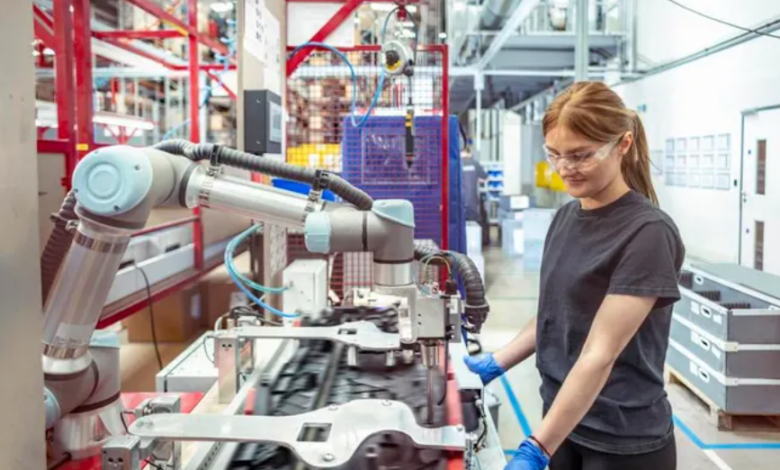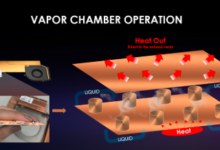Benefits of Implementing Cobot Welding in Your Production Line

Implementing cobot welding in your production line can significantly enhance efficiency, precision, and safety in manufacturing operations. These collaborative robots work alongside human operators, taking on repetitive or hazardous tasks while maintaining consistent weld quality. In this article, “Benefits of Implementing Cobot Welding in Your Production Line,” we’ll explore the key advantages of cobot welding and why it’s becoming an essential investment for modern manufacturers.
What is Cobot Welding?
Cobot welding is a process where collaborative robots (cobots) perform welding tasks alongside humans. Unlike traditional industrial robots, cobots are designed to work safely near people, allowing easy integration into existing workflows.
Cobot welding safely automates tasks, boosts productivity, ensures quality, and is set to become increasingly important in manufacturing.
Key Benefits of Implementing Cobot Welding
Cobot welding offers manufacturers a smarter, safer, and more efficient way to handle welding tasks. Here’s a clear breakdown of the main benefits:
Enhanced Efficiency
Cobots improve productivity by working nonstop without getting tired, which speeds up production and reduces cycle times. They handle repetitive tasks smoothly, reduce workflow bottlenecks, and perform consistently, minimizing errors caused by human fatigue.
Improved Precision and Quality
Cobots provide consistent, high-quality welds across all products, reducing errors and the need for rework. Their precision saves time and materials, and advanced cobots can handle complex or delicate welds that are difficult for humans.
Increased Workplace Safety
Cobots enhance safety by performing dangerous tasks that involve heat, sparks, and fumes, reducing risks to humans. They help workers by reducing physical effort, making tasks safer and easier, and their built-in safety features prevent accidents while following safety rules.
Flexibility and Adaptability
Cobots are simple to program and can be quickly set up for various welding tasks. They can handle both small custom orders and large-scale production, and can be integrated into existing production lines without major modifications.
Cost-Effectiveness and ROI
Cobots help reduce labor costs and material waste by performing precise welding. Although the initial investment can be high, the efficiency improvements and fewer mistakes result in long-term savings. They also provide a competitive advantage by enabling faster production, consistent quality, and flexibility to adapt to changing market demands.
Cobot welding enhances efficiency, quality, safety, flexibility, and cost-effectiveness, making it a valuable investment for modern manufacturing operations.
See also: An Abused Wife Took on Tesla Over Tracking Tech. She Lost
Applications Across Industries
Cobot welding is widely used across various industries that require precision, flexibility, and safety in their welding processes. Here’s how different sectors benefit:
Automotive & Transportation
Cobots are used to weld body panels, chassis parts, exhaust systems, and brackets. They are ideal for repetitive, high-precision welds and can be quickly reprogrammed to adapt to design or model changes on production lines.
Aerospace
Cobots are used to weld structural parts such as fuselage brackets and turbine engine components, ensuring the high accuracy and reliability needed for certified aerospace manufacturing.
Metal Fabrication, Heavy Equipment & Construction
Cobots are used to weld frames, beams, and panels for machines, tractors, and construction vehicles. In shipbuilding, they efficiently handle large structural components like hulls and decks.
Why These Industries Benefit:
- They require precision, reliability, and repeatability, all strengths of cobot systems.
- Cobots offer flexibility, adapting easily to different designs or small-batch production.
- In sectors facing labor shortages or hazardous conditions, cobots enhance safety and reduce physical strain on workers.
Key Considerations Before Implementing Cobot Welding
Initial Investment & ROI
Cobot welding systems can be expensive, including the cost of the robot, tools, safety equipment, installation, and any facility upgrades. Evaluating ROI requires considering potential savings from reduced labor, lower waste, fewer errors, improved weld quality, and increased production efficiency.
Operator Training & Workforce Adaptation
Operators need training in welding basics, cobot programming, setting welding parameters, maintenance, and troubleshooting. Safety training is crucial, including how to use emergency stops, handle sparks and fumes, and wear protective equipment. As cobots take over manual welding tasks, workers may shift to supervising and programming them, which requires learning new skills.
Maintenance & Programming
Regular maintenance is important because welding can wear out robot parts like joints, sensors, and torches. Cleaning, calibration, and inspections help keep cobots working well.
Programming cobots requires setting precise paths and parameters, and sometimes using vision or seam-tracking systems. Complex welds can take time to program, but testing paths in simulation before live runs can save time.
Also, plan for spare parts like torch tips, nozzles, and shields, and make sure technical support is available.
Safety, Compliance & Risk Assessment
Cobots are designed to be safe, but welding still involves risks like sparks, UV light, fumes, heat, and electricity. Following safety standards and local regulations, and using protections such as emergency stops, safety fencing, and sensors, helps minimize risks for workers.
Task Fit & Production Volume
Heavy industrial robots are better for very large, thick, or complex parts. Cobots are ideal for repetitive tasks, but if production is small or changes often, setting them up can take extra time and reduce efficiency.
Future Outlook
Smarter Cobots with AI and Machine Learning
Cobots are getting smarter thanks to AI and machine learning. They can adjust their welding in real time, track seams more accurately, “see” what they are doing, and predict when maintenance is needed. Some systems can even suggest the best welding settings and automatically improve weld quality. This makes it easier for cobots to handle different materials, joint types, and setups without needing manual reprogramming.
Cobots and Industry 4.0
Cobot welding is becoming part of connected, smart factories. Key features include:
- Data Sharing: Cobots share performance data with a central system, helping managers monitor work and improve processes.
- Remote Control and Analytics: Cloud and edge computing enable remote monitoring, troubleshooting, and adjusting welding settings, along with advanced data analysis.
- Flexible Systems: Hardware and software are designed to be easily upgraded or reconfigured, and they can work together with other machines and IoT devices.
Humans and Cobots Working Together
Cobots are collaborative robots designed to work safely and efficiently alongside humans, assisting with tasks rather than replacing people. New trends include:
- Sharing Tasks: Humans and cobots can split work depending on task difficulty, ergonomics, or safety, with roles shifting as needed.
- Easy-to-Use Interfaces: AR and vision-based interfaces make cobots simple and user-friendly for all operators.
- Intuitive interfaces like AR and vision systems make cobots easy for anyone to operate.
- Safer Operations: Dangerous welding tasks can be monitored or controlled remotely, reducing the risk for human workers.
Conclusion
Cobot welding is changing modern manufacturing by offering efficiency, precision, safety, flexibility, and a strong return on investment (ROI). Cobots work continuously with consistent accuracy, reducing production time and downtime while producing high-quality, repeatable welds that minimize defects and rework. Built-in safety features protect workers, and their flexibility allows them to handle a wide range of welding tasks, from small custom jobs to high-volume production.
Although cobot welding can be expensive upfront, it provides long-term savings, better quality, and increased productivity. Cobots help manufacturers run operations more efficiently, protect workers, and remain competitive in today’s evolving production environment.







